653 ½ Washington Street, Cape May, NJ| 1730colonialhouse@gmail.com | Find us on Facebook
Open for the Season from June 15 through September 15
The Colonial House is available to the public at no cost from June 15th to September 15, Wednesdays through Saturdays from 1pm–4pm. The Greater Cape May Historical Society is the steward of the Colonial House (circa 1730).
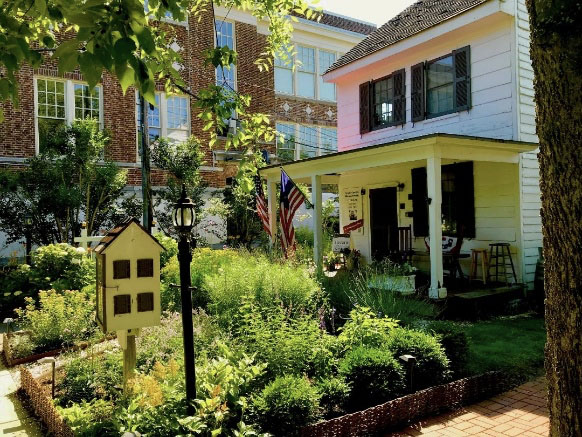
Originally known as Memucan Hughes House, it served as both a tavern and the residence of Revolutionary War patriot Memucan Hughes. The house dates to the early origins of Cape Island and is considered one of the oldest surviving houses in Cape May County accessible to visitors. Since 1974, The Colonial House has been the headquarters of the Greater Cape May Historical Society.

The Society will join Blue Star Museums welcoming active-duty military personnel and their families. The 2025 program runs from May 17 through September 1. Blue Star Museums is a partnership between the National Endowment for the Arts and Blue Star Families, in collaboration with the Department of Defense and museums across America, offering free admission to the nation’s active-duty military personnel and their families, including National Guard and Reserve.
MAC Garden Tour
The Society opened the Colonial House doors for the MAC Garden tour in early May. The Garden Club of Cape May maintains the Colonial House Garden with native medicinal plants and cooking herbs in a colonial style. It is a notable natural area in downtown Cape May. Visitors can observe various plants blooming in different seashore locations influenced by sunlight, ocean breezes, sand and salt.
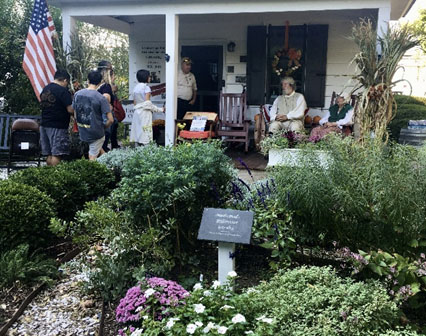
For more information about the Garden Club of Cape May and their community volunteer work in public gardens, visit https://thegardenclubofcapemay.org/.
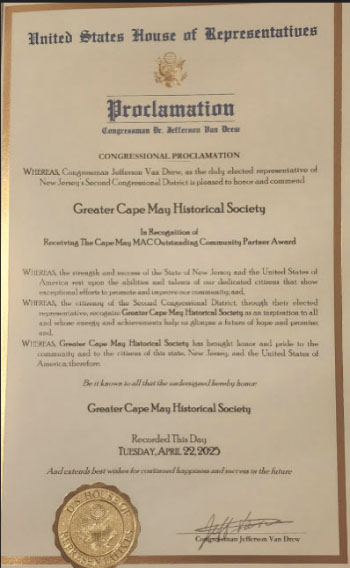
The Greater Cape May Historical Society has been collecting Cape May historical artifacts and documents for over 50 years. In April 2025, it was awarded the Outstanding Community Partner Award by MAC.
The Society provides the Colonial House Museum to collaborate and support Cape May MAC for Holiday, Garden, and Victorian Weekend tours. Nominated by Cape May staff, the Society welcomes visitors to the Colonial House from June 15 through September 15 between 1:00 PM – 4:00 PM. Our volunteer guides provide a warm welcome, and there is no admission fee to visit the house.
For history inquiries and research guidance, please contact the Society via email at 1730colonialhouse@gmail.com.
Closed for the Season
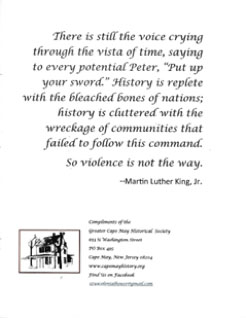
Society Receives Grant from MLK Commission
The Society has reprinted the Programs distributed at an event remembering Dr. King’s visit to Cape May in 1968. The purpose is to circulate a limited number of program copies in honor of Dr. King and his visit to the Cape May Convention Hall and his speech Non-Violence and Racial Justice. Copies are available at the Cape May Library and Convention Hall contact Rachel Ertle at 609-884-9566. To receive a copy by mail, send email to 1730coloniiahouse@gmail.com For more information on the commission: NJ Department of State - New Jersey Martin Luther King, Jr. Commemorative Commission
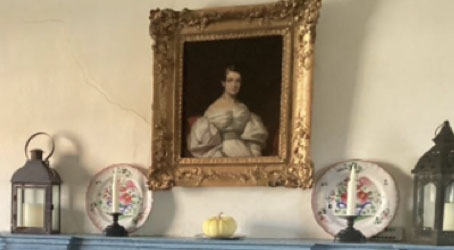
Gift into Society Collection
The Society received to portraits into the collection presumed to be Daniel (1775 – 1811) and Jane Stillwell (1782 – 1829) Willden. The portraits were passed down through many generations of a family who no longer reside in this area. The descendants were not interested in maintaining the line of inheritance, deciding to rehome the portraits in Cape May County in which they lived during their lifetimes.
© 2025 Greater Cape May Historical Society. All rights reserved. | Site: Cape Publishing, Inc.